Combe Raleigh

Commissioned to celebrate the Millennium, the design is intended to convey the unchanging nature of Christian belief, and the need to continue forward beyond the Millennium.
Exhibition panel for The Millennium Exhibition in Celle, Germany
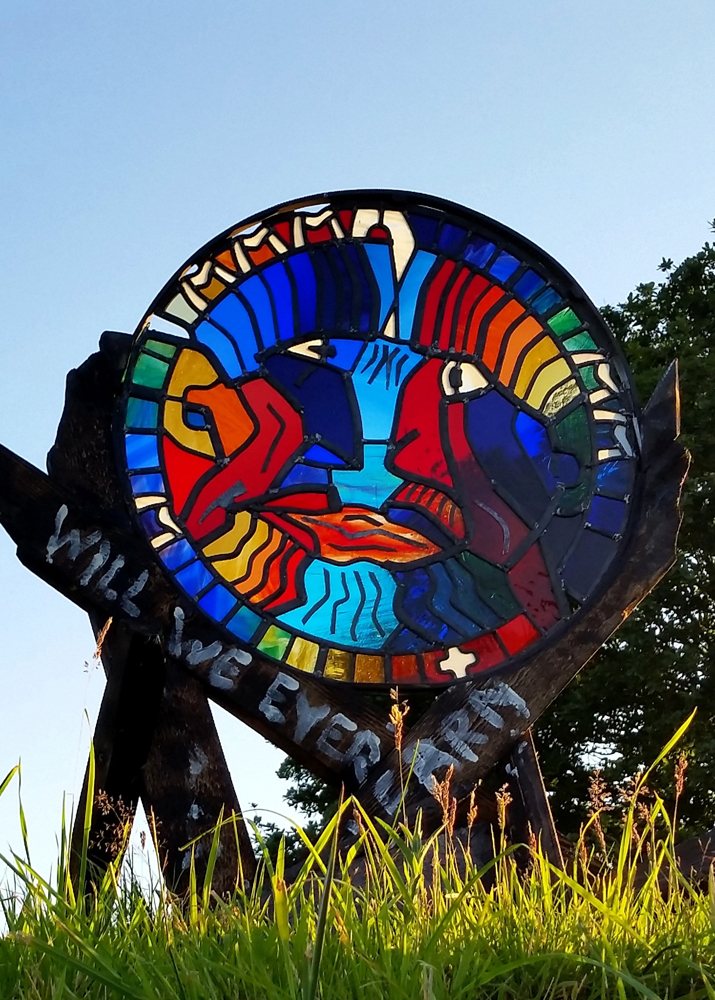
Panel for a house in Cambridge
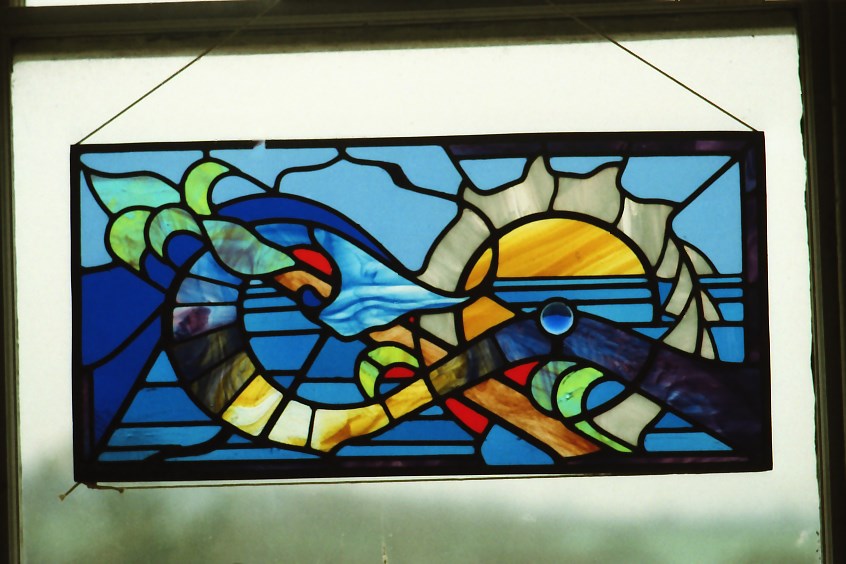
The panel is 73.5cm x 36.5cm, and was constructed in 1989.
Door panel for a cider maker, Milton Abbot, Devon
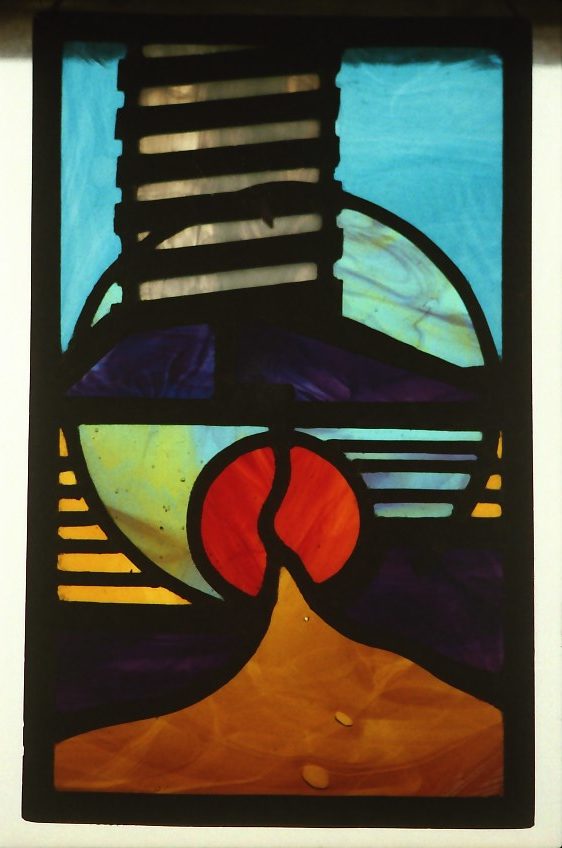
Constructed in 1990, the panel and cider maker have now moved to Somerset
Bethany Respite Home, Bodmin. window for “The Quiet Room”
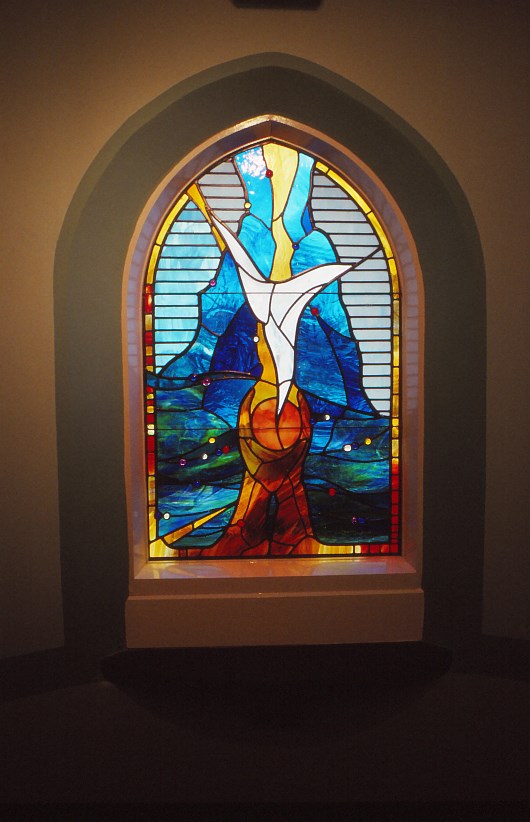
Bethany provided respite for people suffering from HIV and Aids and their Carers. The Quiet Room was constructed in an area of unused corridor, an apse carved in the thick external wall with the window at its centre changed the shape of the space and created a focus for contemplation.
Constructed in 1992,The window is 65cms x 105cms.
Internal screen in a bungalow, Yelverton, Devon. 1990
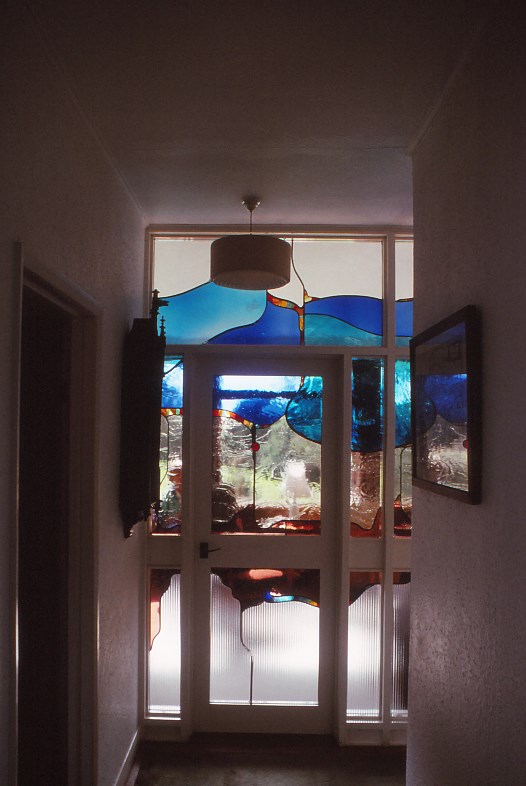
The design took its inspiration from polarized images of thin slices of igneous rock. The main colours run horizontally across the screen with small veins of multi coloured glass compressed between. The door which might of course be open was carefully designed to read on its own.
The whole screen which measures 3.45m x 2.6m can only be viewed in its entirety at a very oblique angle on the corridor side. To allow removal of the existing glass for reuse in the lower panels it was installed while the owners were away on holiday.
Proposed screen for The China Fleet Club, Saltash, Cornwall
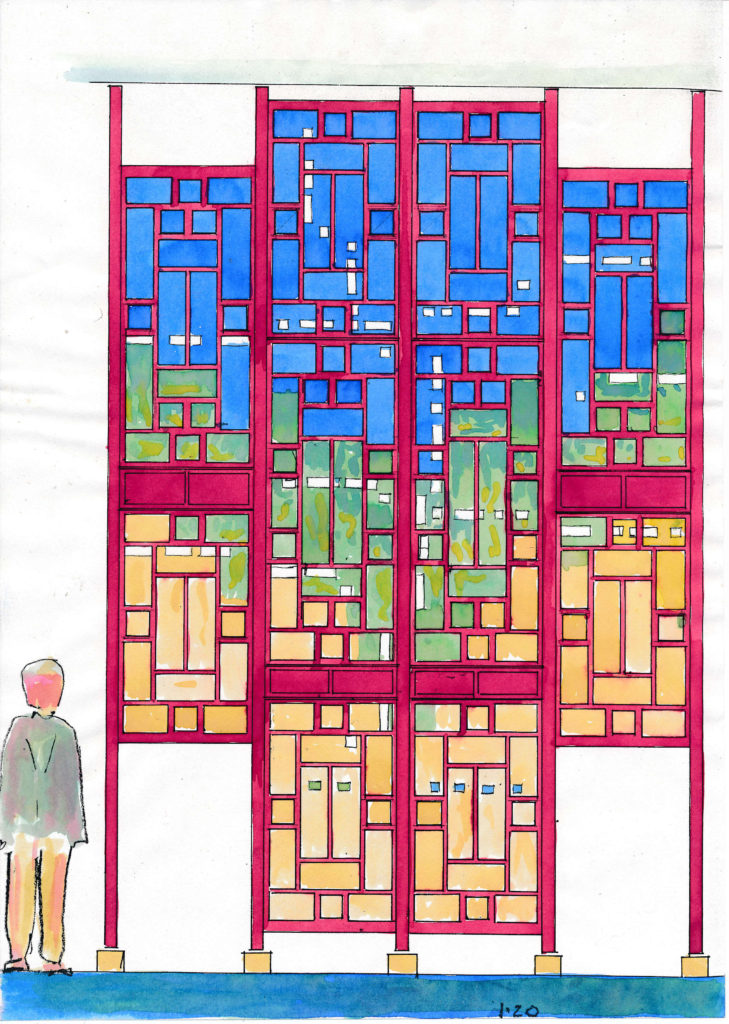
This screen for the entrance area was one of three glazed screens designed for the building. Their form is based on traditional Chinese screens with red lacquered woodwork,and the glass reflecting other traditional paint colours. This screen carried the message “welcome” in Morse code three times. and at the base the word “hi” read from behind the screen for Children.
The other two screens carried the names of the Bars to which they formed entrances in Morse.
The framework was designed in detail, and costed as part of the proposal. Unfortunately the screens were finally omitted from the project.
Door panel at Kelly House 2014
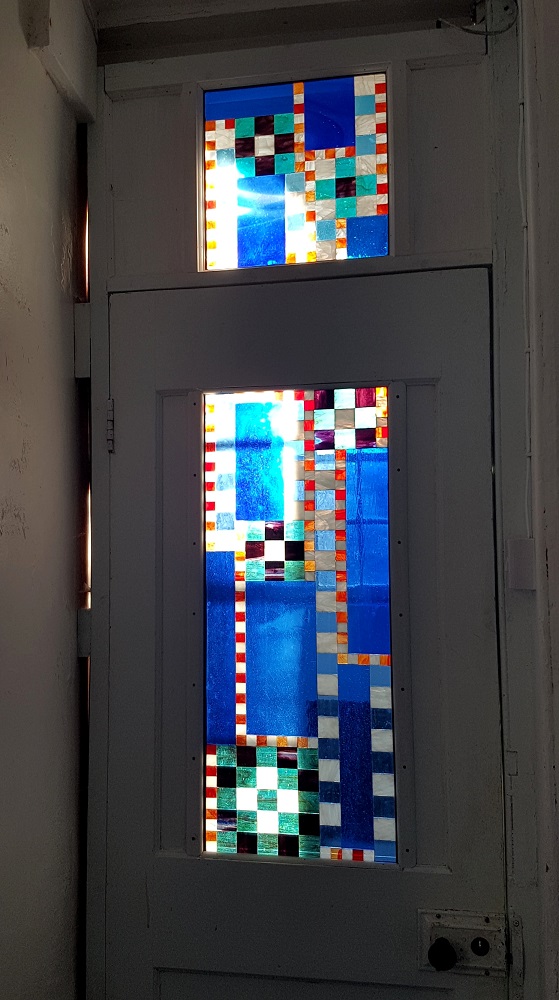
Above the door there was a fanlight. This was trimmed to the width of the glass below and a new section of the design constructed to complete the installation.
For safety reasons the lower panel is protected with a rigid plastic sheet which masks some of the texture of the glass, but nevertheless we get great joy from it as we approach the front door.
Abbey Surgery
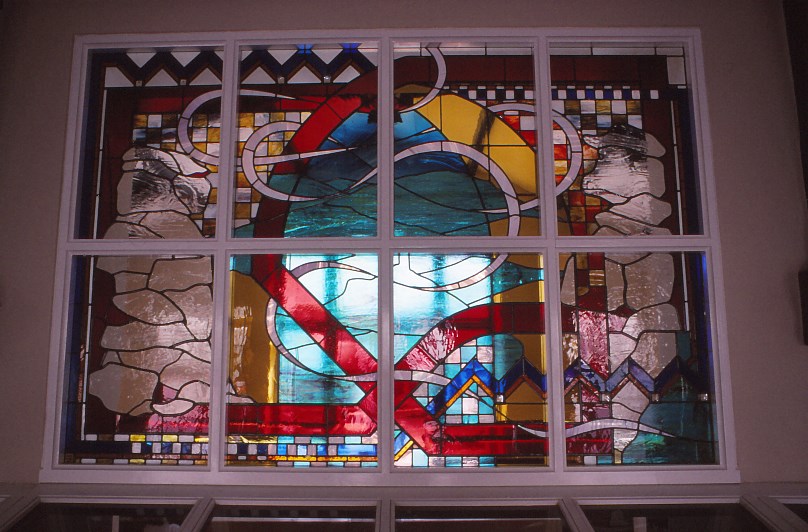
Memorial window design, Church of St Julitta, Lanteglos by Camelford
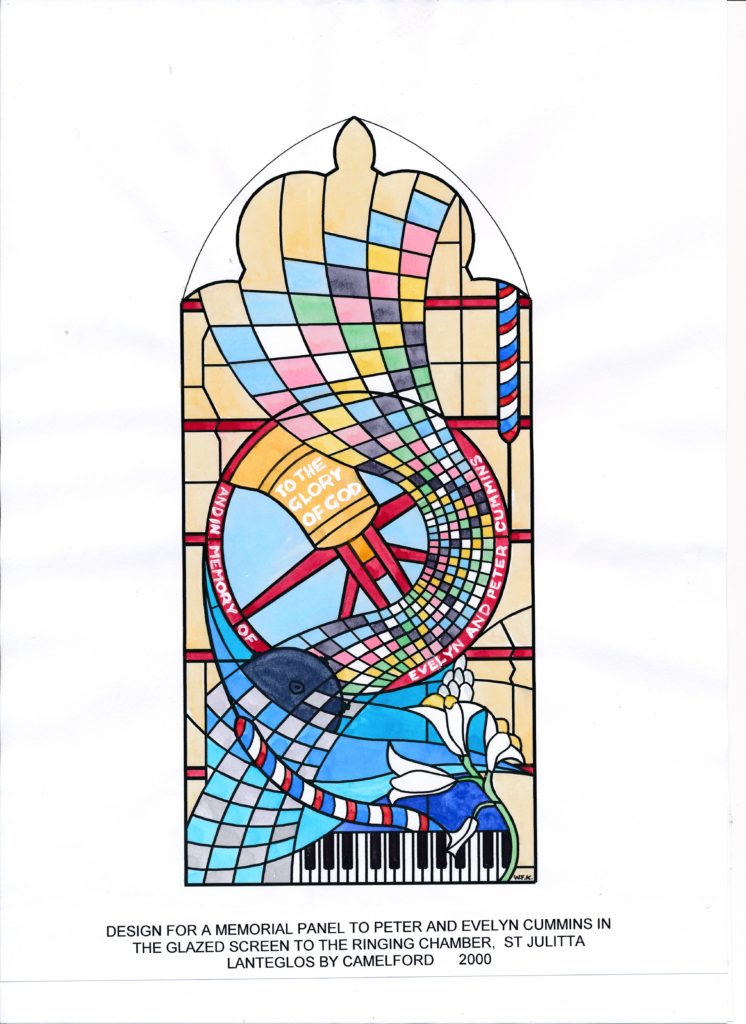
The window will be a memorial to a bell ringer, and his wife who also shared this interest and will occupy the central light of the screen to the ringing chamber. The design contains part of a peal, together with other references to their lives.
Designed in 2002 and awaiting the instruction to proceed.
Tavistock Town Council Chamber “Drake 400” Commemorative Windows
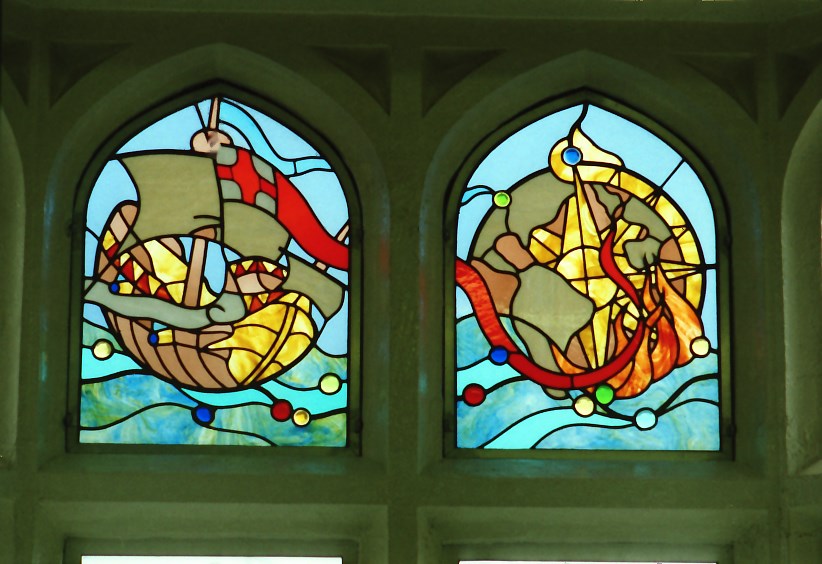
Front door panel for a cottage near Gulworthy, Devon
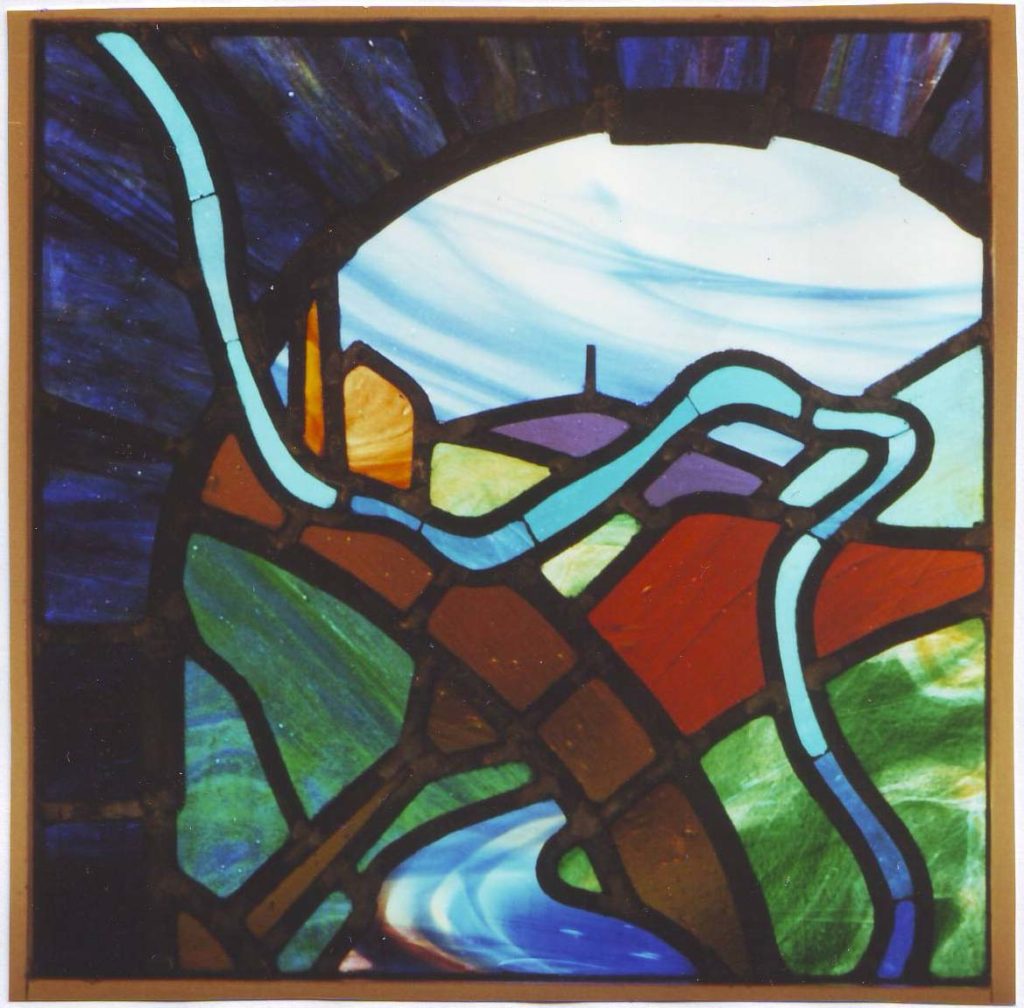
Measuring 30cms x 30cms, the panel was installed in 2000.
Panel for a private house in Cumbria
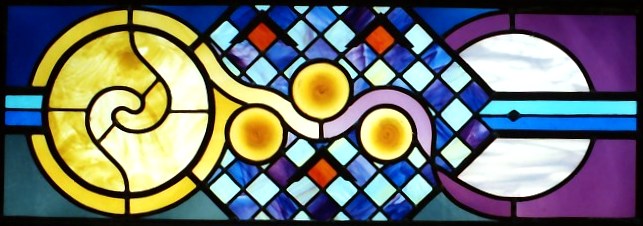
The design starts with the clasped hands and ring of the wedding, and flows over the chequer board of life through rollers representing the children and the husband’s occupation in paper milling, changing into the pink ribbon of legal documents to surround the white circle of the silver wedding. The two blue lines represent the previous and continuing lives of the couple.
Interior door panel in a private house, Chillaton, Devon
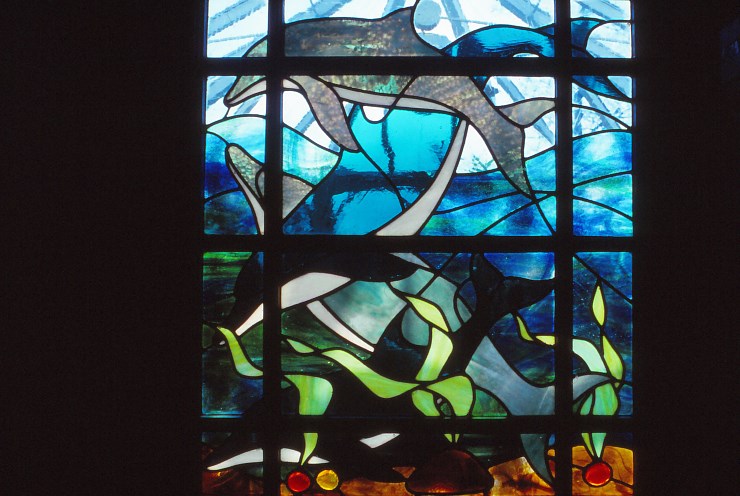
Constructed in 1990, size 81cm x 70cm
Mirrors
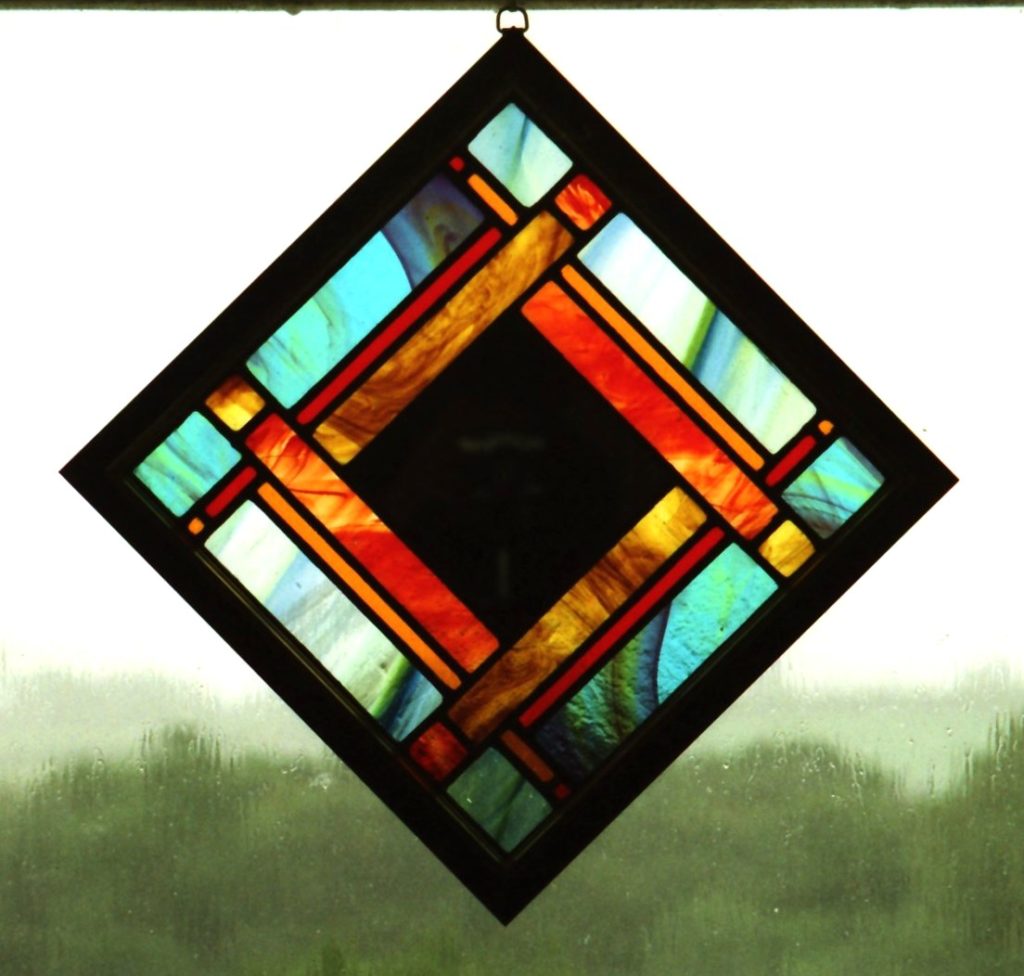
Door panel for a house in Tavistock, Devon, 1985
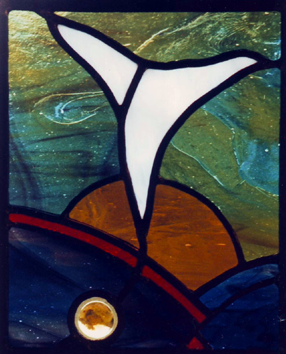
Interior panel for the kitchen of a house near Padstow. 1995

The panel, measuring 141cm x 41cm, includes some intricate glued glass, and wire applique to depict detail. It has been removed from its original location and is scheduled to be displayed as a backlit panel in the new Lifeboat Station at Padstow.
Hetley- Hartley Wood Competition 1988. Bolton Heritage Centre
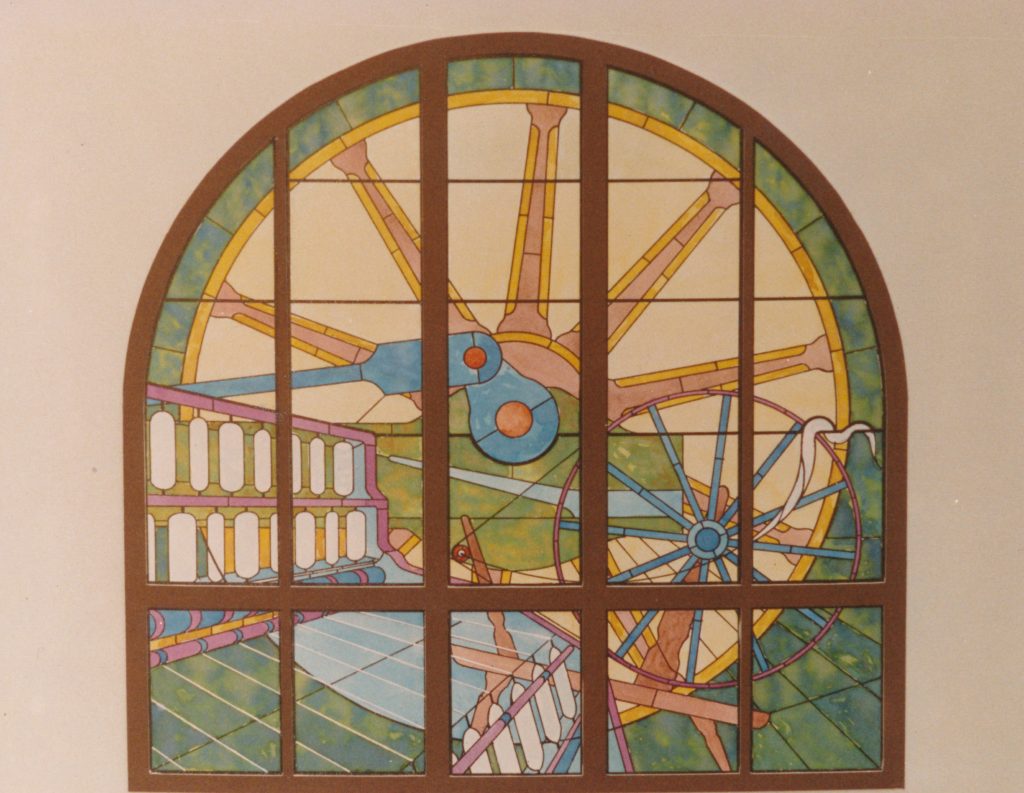
Naturally spinning and weaving was the theme. Centre piece of this design was a massive flywheel of the steam engines that powered these mills.
The design received third Prize, and was exhibited in Preston, and Bolton Art Gallery, and the Museum of Stained Glass at Ely Cathedral.
Door panel for a house near Chillaton in Devon 2013
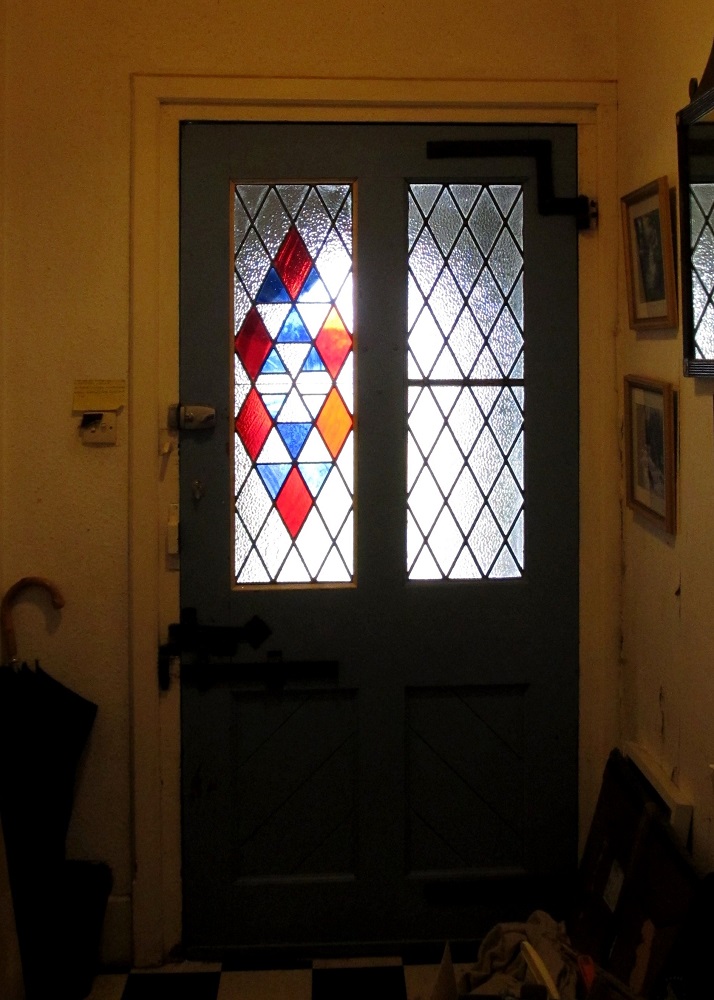
After reflection and discussion the client also asked for ideas for rebuilding the panel using some of the existing glass together with more areas of red and blue glass. Drawings were produced illustrating a number of variations, and shown to the client who selected a design, and a fresh quote was provided and accepted.
The panel was carefully removed, rebates and beading cleaned and inspected, and a temporary plywood panel installed. When stripped down it was noted that there were subtle differences in texture between pieces of the clear glass. This feature was used together with slight differences in the new red and blue glass to add more interest to the new panel.
The panel was installed in the door with a new reinforcing bar at mid point, as would have been the original situation in the other panel.
Panel for a birthday present 2016
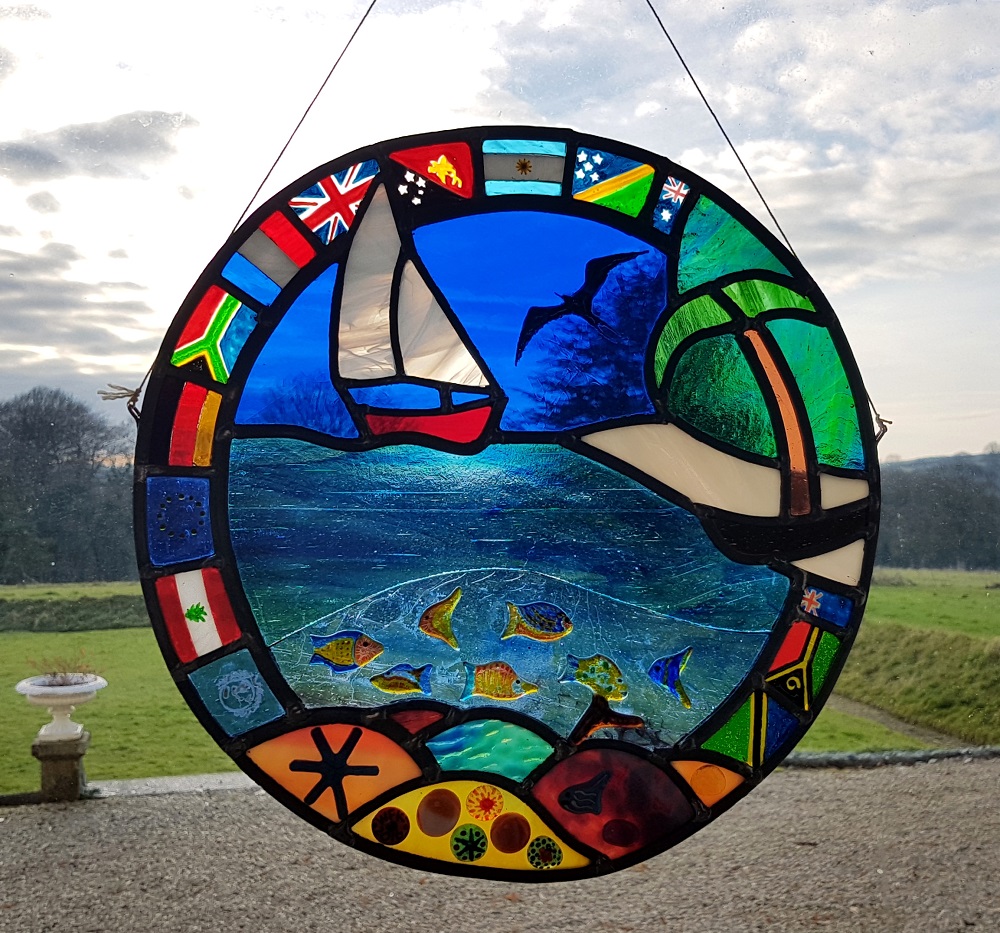
Working within an agreed budget the size of the panel was established at 40cm diameter. Based on an initial discussion a design was produced and sent to the client, who came back with comments and some further thoughts. Given the size of the panel and the reference to World Peace, which is usually depicted by nations flags, much of the detail was depicted with ceramic paint. The fish and other underwater objects were individually constructed using fused and painted glass.